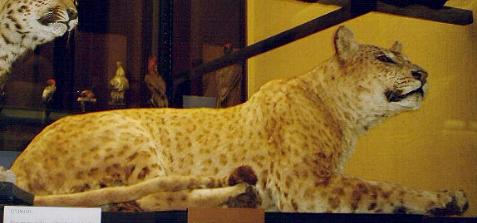Between the 762nd and 767th decimal places of pi there are six 9s in a row.
It’s called the Feynman point, because physicist Richard Feynman said he’d like to recite 761 digits and end with “… nine, nine, nine, nine, nine, nine, and so on.”
Between the 762nd and 767th decimal places of pi there are six 9s in a row.
It’s called the Feynman point, because physicist Richard Feynman said he’d like to recite 761 digits and end with “… nine, nine, nine, nine, nine, nine, and so on.”
32 + 42 = 52
And:
33 + 43 + 53 = 63
2646798 = 21 + 62 + 43 + 64 + 75 + 96 + 87
The world’s slowest science experiment is the “pitch drop experiment” at the University of Queensland. In 1927, physics professor Thomas Parnell poured some pitch into a funnel to see how long it would take to drip out. Pitch is pretty viscous: When Parnell died in 1948, only two drops had fallen.
The experiment is still going on. The eighth drop fell on Nov. 28, 2000, allowing experimenters to calculate that the pitch has a viscosity about 100 billion times that of water.
Famous people with HIV:

This is a jaglion, a cross between a jaguar and a lion. Big cats interbreed pretty easily, which makes for some confusing nomenclature.
Cross a lion with a tiger and you get a liger or a tigon, depending on the parents’ sexes. Cross a leopard with a jaguar and you’ll get a jagulep or a lepjag. And if you cross a puma with a leopard you get the magnificently named pumapard.
You can even make hybrids of your hybrids. Cross your new jagulep with a lion you’ll have a lijagulep. Keep going and eventually you can make liards, jaguatigers, doglas, leotigs, tigards, tiguars, and liguars.
And theoretically, if you crossed a jaguar with a tigress … you’d get a jagger. Hmmm.
No one knows much about Diophantus, the Greek mathematician, but in the sixth century a math puzzle purported to give his epitaph:
“This tomb holds Diophantus. Ah, what a marvel! And the tomb tells scientifically the measure of his life. God vouchsafed that he should be a boy for the sixth part of his life; when a twelfth was added, his cheeks acquired a beard; He kindled for him the light of marriage after a seventh, and in the fifth year after his marriage He granted him a son. Alas! late-begotten and miserable child, when he had reached the measure of half his father’s [total] life, the chill grave took him. After consoling his grief by this science of numbers for four years, he reached the end of his life.”
At what age did he die?
Martin Kallikak was a youthful soldier in the Revolutionary War. At a tavern frequented by the militia he met a feeble-minded girl by whom he became the father of a feeble-minded son. In 1912 there were 480 known direct descendants of this temporary union. It is known that 36 of these were illegitimates; that 33 were sexually immoral; that 24 were confirmed alcoholics; and that 8 kept houses of ill-fame. The explanation of so much immorality will be obvious when it is stated that of the 480 descendants 143 were known to be feeble-minded, and that many of the others were of questionable mentality.
A few years after returning from the war this same Martin Kallikak married a respectable girl of good family. From this union 496 individuals have been traced in direct descent, and in this branch of the family there were no illegitimate children, no immoral women, and only one man who was sexually loose. There were no criminals, no keepers of houses of ill-fame, and only two confirmed alcoholics. Again the explanation is clear when it is stated that this branch of the family did not contain a single feeble-minded individual. It was made up of doctors, lawyers, judges, educators, traders, and landholders.
— From Mental Defectives and Sexual Offenders, report of a committee appointed by New Zealand’s minister of health, 1925
Decimal arithmetic is a contrivance of man for computing numbers, and not a property of time, space, or matter. It belongs essentially to the keeping of accounts, but is merely an incident to the transactions of trade. Nature has no partiality for the number 10; and the attempt to shackle her freedom with them [decimal gradations], will for ever prove abortive.
— John Quincy Adams, recommending against the metric system in 1821, as reported in Chambers’ Edinburgh Journal, May 15, 1852
Psychological diagnoses of inhabitants of the Hundred Acre Wood, according to an article published in the Canadian Medical Association Journal, 2000:
“Pooh needs intervention,” the authors conclude. “We feel drugs are in order. We cannot but wonder how much richer Pooh’s life might be were he to have a trial of low-dose stimulant medication. With the right supports, including methylphenidate, Pooh might be fitter and more functional and perhaps produce (and remember) more poems.”